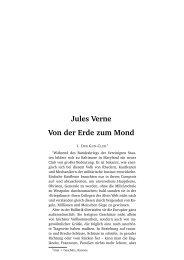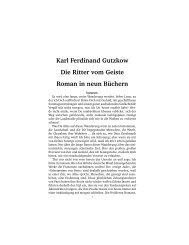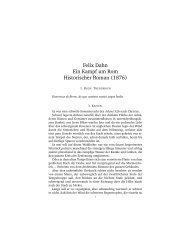The path length of random skip lists - Institut für Analysis und ...
The path length of random skip lists - Institut für Analysis und ...
The path length of random skip lists - Institut für Analysis und ...
You also want an ePaper? Increase the reach of your titles
YUMPU automatically turns print PDFs into web optimized ePapers that Google loves.
With a = Em>1 Q ,"- 1 .<br />
In order to get the asymptotic behaviour <strong>of</strong> [z'- ' ]H(z) for n oo we extend<br />
the contour <strong>of</strong> integration to a large rectangle and shift the left side to the line<br />
Re z = 1 + E, E > 0. <strong>The</strong>n [z" -1 ]H(z) equals the sum <strong>of</strong> residues at the additional<br />
poles included in the contour with an error term <strong>of</strong> order O(n 1+ E) (compare (3] for<br />
technical details <strong>of</strong> the estimate <strong>of</strong> the error term) . In our instance the additional<br />
poles originate from the second integral, and they are located at z = 2 (triple) resp .<br />
z = 2 + Xk, k E Z \ {0} (simple) . <strong>The</strong> computation <strong>of</strong> the residues can be performed<br />
by hand, or, more preferably, e .g . by Maple, and we find for the residue at z = 2<br />
2(Q - 1)2<br />
+ Hn2) 1<br />
n + 1 ~H,2,_i Hn<br />
1 (1 + 2<br />
2 L 2 L2 L )<br />
+ 3 + L2 - 2(a +,3) + 2L + (Q 1 I )L }'<br />
(2 .31)<br />
where L = log Q, H,,, resp . H(,,,2) are the harmonic numbers <strong>of</strong> first resp . second order,<br />
and ,0= E 1 2 .<br />
m>1<br />
(Qm- 1 )<br />
<strong>The</strong> asymptotic equivalent <strong>of</strong> (2 .31) is<br />
2 g 2<br />
2(Q - 1) 2 n12 Q n + n 2 logQ<br />
n C L 2 L l<br />
2 1 1 'Y 'Y 'Y2<br />
~2<br />
1 1 l<br />
+n (6+L2-a-~-2L L2+ 2L2+ 12L2+ 4L + 2(Q - IL) )<br />
+O (n log e n)<br />
. (2.32)<br />
I<br />
<strong>The</strong> first order poles at z = 2 + Xk, k E Z \ {0}, give a contribution <strong>of</strong> the form<br />
n 2 68 (log Q n) + 0(n), (2 .33)<br />
where 58(x) is a continuous periodic function <strong>of</strong> period 1 and mean zero . <strong>The</strong> Fourier<br />
coefficients <strong>of</strong> 68(x) can be obtained explicitly from the residues at the above . mentioned<br />
poles . <strong>The</strong>y can be used to show that the amplitude <strong>of</strong> 68(x) is very small<br />
(because <strong>of</strong> the exponential decrease <strong>of</strong> the F-function along . vertical lines) . Since<br />
from the practical .point <strong>of</strong> view 6 8 (x) has almost no influence on the variance, we<br />
omit these calculations here .<br />
Combining (2 .32), (2 .33) and Proposition 1 we get the asymptotic equivalent <strong>of</strong><br />
Var(Xn,) according to (2 .11) . <strong>The</strong> reader should take notice <strong>of</strong> the fact that the term <strong>of</strong><br />
order n2 in E(X n )2 contains the square 6 2 (logQ n) <strong>of</strong> the fluctuating term 6 1 (logQ n),<br />
where 61(x) has mean zero . <strong>The</strong>refore we have<br />
2<br />
Var(Xn,) = (Q - - 2(a +)(3) +<br />
[<br />
1)2n2 2L + 12 2L + 6L2 (Q _ 1 1)L 2L 6 1<br />
0<br />
+n 2 64(logQ n) + 0(n 1 +6 ), E > 0, (2 .34)<br />
where [ 62 ] o is the mean <strong>of</strong> 62 (x), and 64 (x) is a small periodic function <strong>of</strong> period 1<br />
and mean zero .







